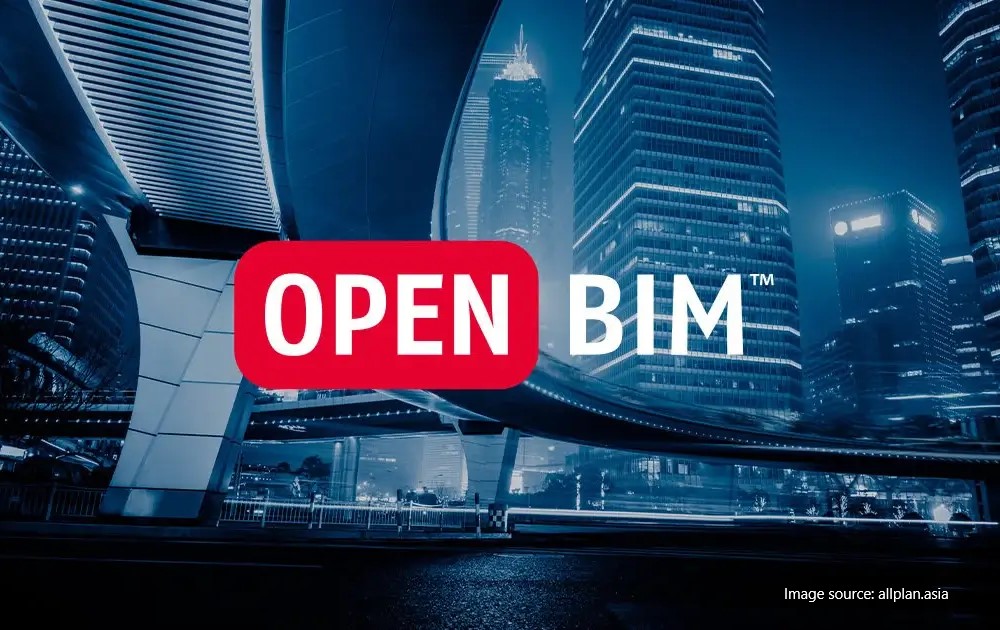
The construction industry is undergoing a digital transformation, with Building Information Modelling (BIM) at the forefront of this change. While traditional BIM has already brought significant improvements to project management, design, and construction processes, OpenBIM takes these benefits to a new level. By fostering interoperability and collaboration through open standards, OpenBIM offers a more inclusive, efficient, and innovative approach to construction projects. This blog delves into the implementation of OpenBIM, highlighting its advantages and the steps involved in adopting this transformative technology.
What is OpenBIM?
OpenBIM is an approach to Building Information Modelling that uses open standards and workflows to facilitate interoperability between different BIM software applications. OpenBIM ensures that information can be shared, accessed, and utilized across various platforms. This is achieved through standardized file formats such as Industry Foundation Classes (IFC) and BIM Collaboration Format (BCF), which are neutral and non-proprietary.
Benefits of OpenBIM Implementation
Enhanced Collaboration
OpenBIM significantly enhances collaboration among project stakeholders, including architects, engineers, contractors, and facility managers. By enabling seamless data exchange between different software tools, OpenBIM eliminates compatibility issues and ensures that all parties work from the same data set. This fosters a collaborative environment where design iterations, modifications, and updates are communicated efficiently, reducing the risk of errors and miscommunication.
Increased Efficiency
Implementing OpenBIM streamlines workflows by eliminating the need for repetitive data entry and manual data conversion between different systems. This not only saves time but also reduces the potential for errors associated with manual data handling. For example, changes made in one software can be automatically reflected in others, ensuring data consistency and accuracy throughout the project lifecycle. This increased efficiency translates into shorter project timelines and reduced costs.
Long-Term Data Accessibility
One of the key advantages of OpenBIM is the longevity and accessibility of project data. Since OpenBIM uses open standards, project data remains accessible and usable over the long term, regardless of the specific software used during the construction phase. This is particularly important for facility management, where accurate and up-to-date information is crucial for maintenance, renovations, and operations. OpenBIM ensures that data remains relevant and useful throughout the building’s lifecycle.
Innovation and Flexibility
OpenBIM fosters a competitive and innovative environment by providing a level playing field for software developers. Open standards allow smaller companies and startups to develop niche tools and applications that can seamlessly integrate with established systems. This encourages technological advancements and offers a broader range of solutions for various project needs. For instance, innovative applications focusing on sustainability, virtual reality, or smart building integration can be developed and used alongside traditional BIM tools, enhancing project outcomes.
Regulatory Compliance
With the increasing adoption of BIM mandates for public construction projects, regulatory compliance has become a critical aspect of project management. OpenBIM facilitates compliance by ensuring that data can be shared and reviewed by regulatory bodies, regardless of the software used by the project team. This transparency and consistency help in meeting legal and procedural requirements, streamlining the approval process and reducing the risk of delays.
Sustainability
OpenBIM supports sustainable construction practices by enabling comprehensive analysis and optimization of building performance. Through interoperable data exchange, project teams can conduct energy simulations, assess environmental impacts, and optimize resource use more effectively. This leads to the creation of buildings that are not only efficient in terms of energy and resources but also contribute to overall environmental sustainability.
OpenBIM represents a significant advancement in the construction industry, offering numerous benefits in terms of collaboration, efficiency, data accessibility, innovation, regulatory compliance, and sustainability. By implementing OpenBIM, construction projects can achieve greater transparency, reduce costs, and improve overall project outcomes. As the industry continues to evolve, adopting OpenBIM is a strategic move that can pave the way for a more integrated, efficient, and sustainable future in construction.
Draftech – Your Project, Our Expertise
Testimonials
Very professional and efficient organization. Delivered a great product to a tight deadline.
ACE Power
Karl and the team are very professional and have a vast knowledge of BIM coordination.
Dwayne Willaims Babinda Electrics
We had multiple large projects with tight deadlines and needed a company we could trust. The teams delivery, attention to detail and understanding of what is being designed is always executed to a high standard.
Martin O’Donovan Envar Engineers
Draftech offered a flexible and reliable approach to working collaboratively with our team. They met our expectations and quality requirements and also offered up new ideas.
Draftech have proven to be a valuable and trustworthy resource and we will continue to work with Draftech on other projects.
Simon Marsden Umow Lai
Draftech is different from others in the professionalism and features they provide.
The ability to walk through projects in real time online provides invaluable insight into problem areas and helps provide an efficient resolution on the spot without many phone calls, emails and the necessity for us to paw through countless drawings to understand the issues.
Todd Morris Manager - Air mech
Draftech were put forward to FIP Electrical as the solution to Coordinate, Model, carry out clash detection, provide Electrical Services Shop Drawings, as built documentation and completed electrical model.
Simon Thorpe FIP Electrical
In close collaboration Draftech set up all our systems and model deliverables. In this process Draftech have proven to be a valuable resource for us and demonstrated commitment, understanding and professionalism.
David Skelley DJCoalition
Draftech’s attention to detail and proactive nature throughout the project assisted us in identifying issues before becoming evident on site, saving us both time and unexpected costs.
Matt Payne PJM Engineering Services
They delivered very high quality Revit models and associated 2D documentation at key milestones, working to a tight budget and in strict accordance with the Architects’ BIM requirements.
Peter Thomas Geoff Hesford
We found Draftech’s work to be of high standard and the team delivered exactly as agreed, in fact, when we considered the project complete, Draftech put further resources into the project as they were not satisfied.
John Johnson Beca
Engaging Draftech during design gave us the tools to make smart decisions.
Hansen Yuncken Design Manager - Michael Harkins
The drafting service is timely, reliable and fit for purpose for the built environment.
Peter Harvey Harvey Industries
Draftech stands apart from other drafting services that we have previously used in their attention to detail and ability to adapt to the individual client’s requirements.
Doug Holt McCaig Aircon
I can confidently recommend Draftech as a solid and reliable supplier, and experts in their field. I look forward to working with them again in the near future.
Chris Behan Norman Disney & Young
After seeing the benefits Draftech provided us on the Townsville Hospital Redevelopment we have set up a relationship with Draftech and intend to continue to use their BIM knowledge and skills for our future projects.
Brad Lund Energy Power Systems
Draftech has no competition as they are in a class of their own.
John Boyes Babinda Electrics
Draftech Developments Drafting and Design Capabilities, in conjunction with their outstanding level of Client service and support has provided great solutions to our engineering and Drafting Design portions within our Gorgon Barrow Island Project.
Aaron Hazelton Applied Electro Systems Pty Ltd
Draftech set up necessary systems and workflows very quickly, but also setup auditable estimating and weekly cost tracking processes that we utilised, requiring little maintenance.
TOM PURDON MPM GROUP




























